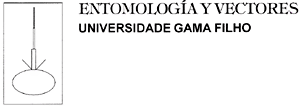Rural electrification programs in remote areas based on both photovoltaic and traditional installations, could introduce a new anthropic factor, which is associated with Culicidae. To evaluate differences in mosquitoes attractiveness in relation to types of lamps two New Jersey traps were used: one with a 40 W incandescent lamp and the other with the same light intensity, a 9 W fluorescent bulb, compact, with an electronic reactor with 6.200 K of light temperature. The traps were set in two chosen areas according time and place previously established in a total of 11 collections from January and April 2002. The results show that the fluorescent lamp attracted 1,3 more culicidae than the incandescent lamp, in both areas a total of 806 specimens were collected including Aedes albopictus Skuse, 1894, Ochlerotatus scapularis (Rondani, 1848), Anopheles albitarsis Lynch Arribálzaga, 1878, Culex (Culex) nigripalpus, Theobald, 1901, among others. Studies should be carried out before the rural electrifications programs are implemented in order to evaluate the epidemiological consequences of such enterprises.
Culicidae; impacts; rural electrification




